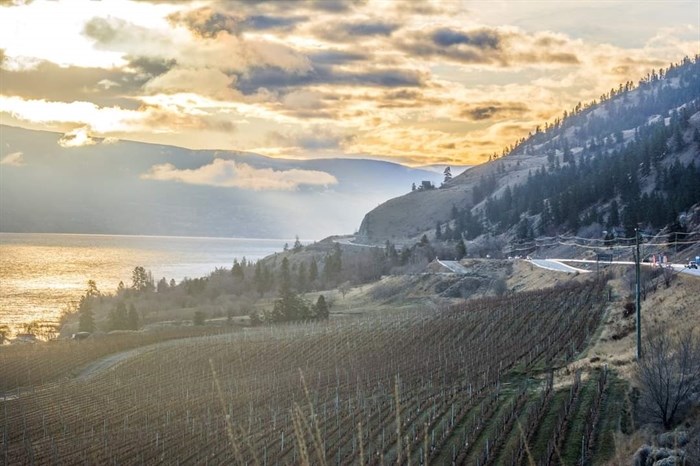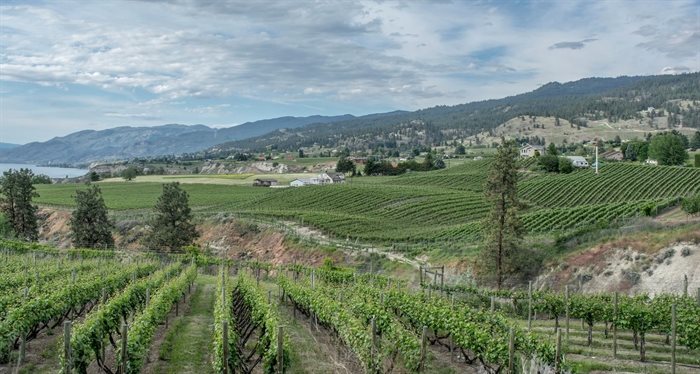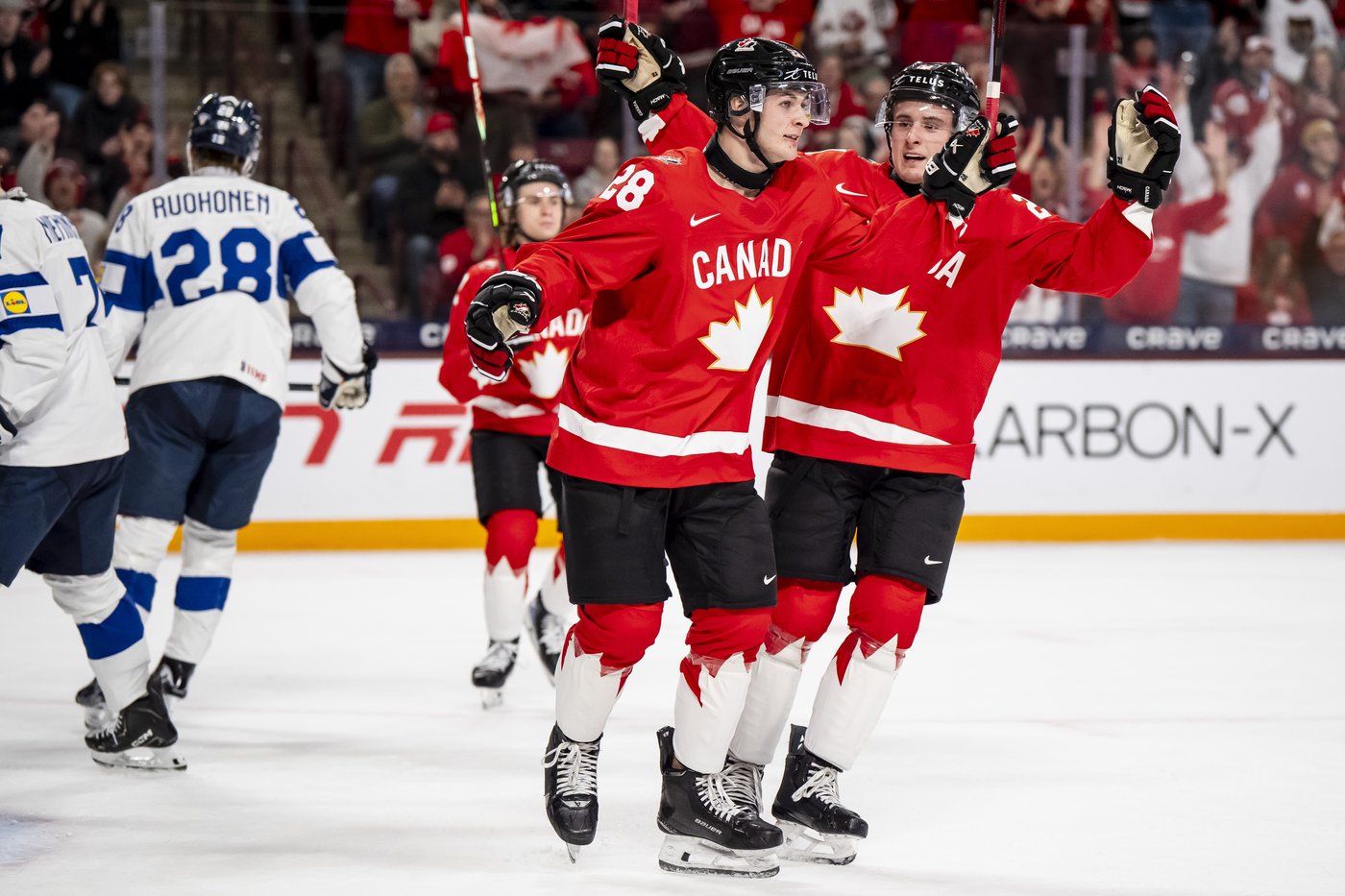Why the Okanagan Valley has so many wineries; the Okanogan so few

Despite being one big ecosystem, the Okanagan Valley’s wine industry has ripened far more on the Canadian side of the border.
Between Salmon Arm and Osoyoos, there are 186 licensed grape wineries and 9,617 acres of vineyard, according to winebc.com.
Down in Washington State – where the same valley goes by the slightly different name of Okanogan – only a small handful of wineries can be found throughout the region.
One of them is RockWall Cellars in Omak. Doug Sheets, the winemaker, feels held back by lopsided customs rules. Anybody returning to Canada is required to pay steep taxes on even a single bottle of wine, especially if they didn't spend much time in the US.
“Your government has such a high import tax on the wine going back into B.C. It’s nearly as much as the bottle of wine,” Sheets said. “It basically stops trade between Washington and B.C., even though we’re only 50 miles apart.”
For anyone entering the US, there is no limit on the amount of alcohol travellers can enter the country with for personal use, according to US Customs and Border Protection.
“I don’t get a piece of the action either way,” he said.
On the production side, Sheets said he used to purchase grapes from B.C. occasionally, however the US implemented new inspection requirements around a decade ago, and it’s no longer feasible to import them.
For anybody conducting a blind taste test of Okanagan wines from both sides of the border, he said it would be difficult to know which country a bottle is from.
“The grapes take longer getting to maturity up north, but essentially we have the same growing conditions,” Sheets said.
Bruce Fuller spent nearly a decade as the proprietor of Rustico Farm and Cellars in Oliver before it closed in 2017. He didn't notice a large portion of visitors coming from the US, but those who did usually travelled from Seattle and other large cities, rather than nearby border communities.
He also noticed the trend of replacing the Okanagan’s orchards with vineyards only caught on north of the border.
READ MORE: Why Kamloops doesn't (yet) share the Okanagan's bounty of tree-fruits
Erasmo Nunez, a vineyard manager in the South Okanagan, notices the northern side of the valley gets much more publicity, despite sharing similar growing conditions.
For Canadians who want to visit the warmest part of their country, the Okanagan is one of the best options. Osoyoos’s slogan is “Canada’s warmest welcome.” However there are many warmer options for American travellers than the Okanogan.
“It’s known as the warmest place in Canada,” Nunez said. “It may not be Mexico or the Caribbean – but it’s the closest thing to the Caribbean for the rest of Canada.”
Building upon its momentum over the past two decades, Nunez says many wineries on the Canadian side have stepped up their game by hiring winemakers as well as chefs from France and other established wine region around the globe.
But despite having a head start on the industry as well as protectionist measures in place, Nunez suspects the American side of the valley will also become full of vineyards.
“We have no more big parcels of land left in the Okanagan with good conditions, and they do in Washington. It won’t be long before that changes.”
Until then, the valley's wine industry continues to grow deeper roots up north as a result of being divided at the 49th Parallel.
"The Okanagan has a very different relationship with Canada compared to the relationship (The Okanogan) has with the US," said Richard Cannings, MP for South Okanagan—West Kootenay.
"The Okanogan County in the US is quite a bit different economically, simply because if you’re in Washington State you might have other places you want to go for holidays."
For anybody investing in Washington State, Cannings said wine regions like Yakima and the Columbia Valley are much more developed than the Okanogan.
"So properties in the Okanogan, on the American side, might have a different business case than the ones here," he said.
In his travels, Cannings – who is also a biologist – notices that the Okanagan River is in a much more natural and beautiful state in the US, "whereas ours is all channelized."
Ben Stewart, who owns Quail’s Gate Winery in West Kelowna and is the MLA for Westside-Kelowna, said that south of Osoyoos, the Okanogan has been ignored as a wine region.
"They could easily have a comparable industry, it’s just that nobody has really taken the opportunity to do that,” Stewart said.
He said Washington’s wine industry gravitates closer to Prosser, Washington, where there’s an irrigation research station. It’s near the City of Walla Walla and close to the state’s southern border.
“There are Canadian vineyards that would like nothing better than to be able to expand into Oroville,” Stewart said.
However he suspects water supplies are not as abundant on the US side of the valley, and “Moving fruit across international border has always been an issue.”
But despite the red tape, importing grapes into Canada was an important part of developing the Okanagan’s wine industry.
“For decades, thousands of tons of grapes or juice moved into the Okanagan from California. They were blended with local grapes of substandard quality. Of course now it’s changed dramatically.”
Nowadays, Stewart said producers who use grapes grown out-of-province to blend their wines are subject to higher fees if they sell through the B.C. Liquor Distribution Branch.
Separating the valley by a geopolitical line may be arbitrary in many ways, but Stewart argues that fruits grown on the Canadian side “far outweighs” those of Washington State, as B.C.'s slightly-cooler climate generates stronger flavours in the crops.
Christa-Lee McWatters, the general manager of TIME Family of Wines in Penticton, credits the much larger bodies of water on the Canadian side of the valley for enabling a stronger wine and agriculture industry.
“We have the moderating effect of the lake on our side of the boarder – it would be too cold here in the winter without it,” McWatters said. “Sure Osoyoos Lake crosses the border but it doesn’t go much further.”
Beyond the infrastructure required to operate vineyards, McWatters said a wine region needs a tourism component to support it – such as hotels and restaurants – and those amenities are noticeably absent south of the border.
Furthermore, Washington's portion of the valley is too sparsely populated to support an industry as strong as Canada's.
“It’s pretty remote when you get to Oroville area.”
— This story was updated at 1:45 p.m. to include quotes from Christa-Lee McWatters, and to correct the name of Erasmo Nunez who was misidentified in the original version.
To contact a reporter for this story, email Dan Walton or call 250-488-3065 or email the editor. You can also submit photos, videos or news tips to the newsroom and be entered to win a monthly prize draw.
We welcome your comments and opinions on our stories but play nice. We won't censor or delete comments unless they contain off-topic statements or links, unnecessary vulgarity, false facts, spam or obviously fake profiles. If you have any concerns about what you see in comments, email the editor in the link above.






